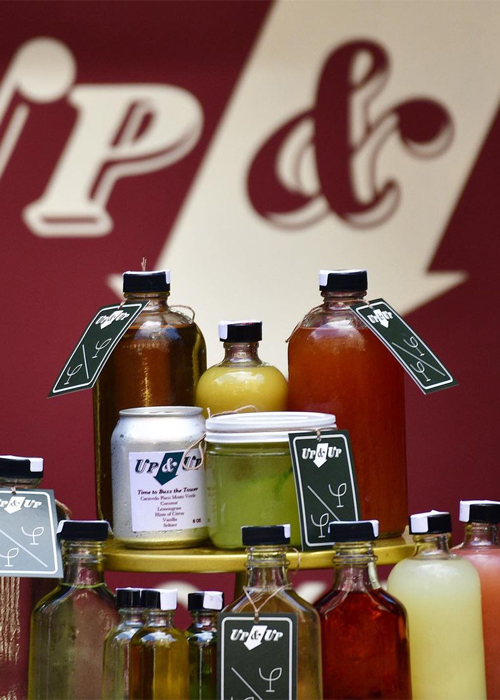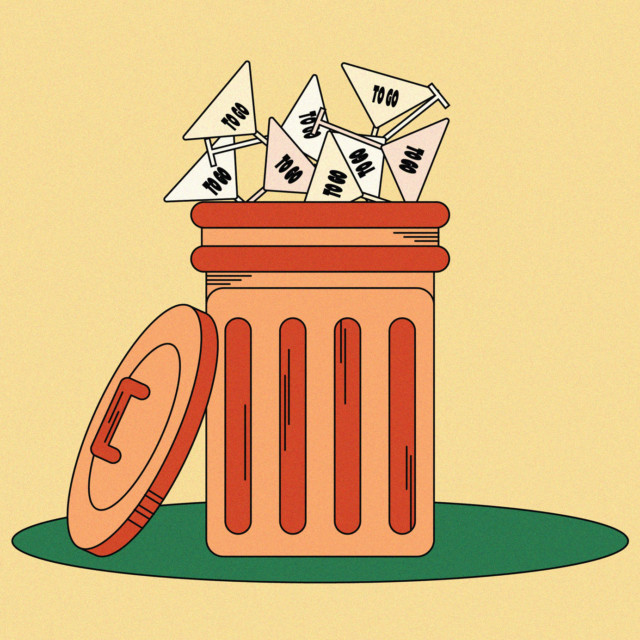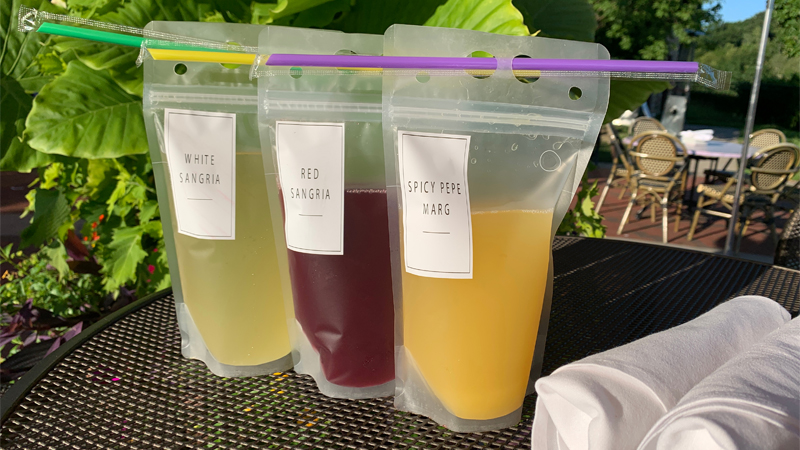There is no way to exaggerate the importance of to-go cocktails during the pandemic. The portable potent potables were a business-generating godsend from day one, seemingly impossible to besmirch during the pandemic’s height. For some establishments in the 33 states that hastened temporary to-go cocktail laws, they were liquid lifeboats. “Cocktails to-go frankly saved my bar,” says Jason Seele, whose Bay Area bar Los Gatos Soda Works in Los Gatos, Calif., opened just before the pandemic hit. “We feel very fortunate to have made it to the other side.”
Yet there is a dark side to to-go cocktails — one that grows in clarity as we slowly inch our way toward the pandemic’s end. While the practice is noble on paper, it has a problem with plastic. The environmentally unfriendly material tends to be the container of choice for mobile Manhattans and on-the-go Old Fashioneds for reasons ranging from state-driven mandates requiring plastic to-go containers, to simple cost effectiveness.
Understandably, raising red flags over the mass use of plastic wasn’t a narrative anyone approached when the pandemic began shutting things down. The snap decisions Covid-19 forced lawmakers to enact like to-go cocktails were chiefly and correctly focused on helping establishments merely survive. One year later, discussions about reconciling to-go cocktails’ carbon footprint have begun to emerge as concern among eco-friendly bar pros builds.
“Even by the time Alabama phased out cocktails to-go the first time [in September], we were looking at all of the waste it was producing, and it wasn’t OK, ” explains Laura Newman, owner of Queen’s Park and Neon Moon in Birmingham, Ala. “It just didn’t feel good ethically.”
A STATE-BY-STATE PROBLEM
The lack of sustainability regarding mobile cocktails is a dire concern for Newman, the 2018 U.S. Bartenders’ Guild World Class Bartender of the Year. Her dedication to upholding sustainability practices like reducing citrus waste and using paper straws at her bars places her on Alabama’s environmental cutting edge during normal times. Yet the state’s to-go cocktail laws mandated the use of single-use plastic containers per drink, compelling her to temporarily sacrifice her ecological principles to keep things afloat. Now that the pandemic’s end is in sight and the state has passed legislation to make cocktails to-go permanent later this year, she’s already advocating for smarter, greener methods that would allow sustainably focused bars to avoid environmentally based moral quandaries. “I’ve been calling our governor every day for the past six months,” she says. “I’m pretty sure she hates me.”
Thankfully, most states that greenlit to-go cocktails gave their bars enough legal leeway to come up with creative, less wasteful solutions for takeout packaging. While plenty of watering holes still stuck to plastic containers, other spots took a greener path. In Manhattan, the popular Greenwich Village bar The Up & Up skipped the plastic and took to serving to-go cocktails in washable, reusable, and recycle-ready glass jars for their customers. The very nature of the containers encourages multiple uses and therefore produces less waste, but it also provides a bonus: The glassware’s simple yet inherent elegance acts as an extension of the bar’s ambience for those not ready to return to in-person imbibing. It’s not a cost-effective choice — compact cases of glass can hover around a dollar, where much larger orders of plastic containers can be found for pennies per vessel — but it’s a decision the bar finds economically justifiable given its address. “We’re in Greenwich Village,” explains The Up & Up’s head bartender Ali Martin. “Considering what we can charge for a cocktail, we can swing the cost of the glass a little better than others might.” Martin also notes that some patrons are also showing a measure of proactive responsibility with the containers once they’re finished using them. “We’ve had quite a few regulars recycle the jars or return them to us after they’re done,” she says. “People seem to generally care about the packaging, and they’ve reacted in a way that demonstrates that.”

WHAT DOES THE FUTURE HOLD?
As more states push toward making to-go cocktails permanent, the plastic waste associated with the practice may remain an ongoing issue. How much waste could be potentially generated, though, is up for debate. Some bartenders feel the siren song of the inimitable bar experience will be irresistible enough to shrink the requests for to-go drinks to a minimum once people feel safe to gather and delight in each other’s company over a Martini. Others think the ability to pick up a complex drink that can’t be replicated in a home bar carries enough long-term appeal to keep carryout drinks humming. Still, waste is waste regardless of how much or how little is generated. So will cocktails to-go reach a tipping point, turning from benevolent bar savior to an environmentally unsustainable heel? “I’m not sure when or where a breaking point can be reached if cocktails to-go is made permanent, but I think one can be reached,” Seele says.
If these laws are left standing once the post-pandemic veneer is removed, bars nationwide will have the opportunity to take a step back, assess the amount of plastic waste caused by to-go drinks, and follow Newman’s example by advocating for more sustainable solutions to a problem that was unfathomable at the beginning of 2020. “I hope that we as an industry take the lead,” Martin says. “If enough people put their weight behind a push for greener ideas, we can prevent to-go cocktails from turning into a waste monster.”

